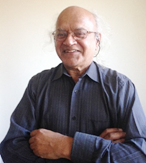
Title: The Energy based approach to Fatigue
Plenary Talk
Prof. N. Ranganathan
University of Tours, France
Abstract
The author has been working in the energy based models in Fatigue over the past 30 years. This paper is a review of this approach. In the case of fatigue crack initiation, initial models based on dislocation kinetics are reviewed. As a recent application, the models developed in the microelectronics applications are presented. In the case of fatigue propagation, recent developments of the model developed by the author are highlighted. It is shown that most effects attributed to crack closure can be successfully described based on Energy concepts. It is proposed that two fundamental modes of crack growth exist
- one based on cycle by cycle crack growth by striation formation at moderated growth rates,
- second based on a step by step growth at low growth rates.
Based on these facts, a unique crack growth model is proposed that permits the description of fatigue crack growth covering 7 decades, irrespective of the environment. In the case of variable amplitude loading, the energy based analysis shows a similar evolution , based on the existence of two modes of crack growth. The model is extended to fatigue of elastomers – where it is shown that hysteretic energy describes the effects of frequency and the load ratio. A viscoelastic model is developed and it can be shown that specific aspects of elastomer fatigue, such as the strain induced crystallization can be described by energy concepts. Finally multi-axial fatigue behavior in an elastomer is successfully described based on the energy model.
Biography
Narayanaswami Ranganathan graduated as an aeronautical engineer from IIT Madras (1965 – 1970). He worked with the Indian Civil Aviation Department (R&D Directorate) in New Delhi until 1976 when he migrated to Poitiers, France. He completed his Docteur-Ingénieur degree in 1979, and was awarded the Doctor of Sciences degree from the University of Poitiers in the field of Solid State Mechanics in 1985. Following this he was in Poitiers until 1996, working as an associate Professor at the E.N.S.M.A aeronautics school. He was nominated Professor at the University of Tours in 1997 and after retirement, he is nominated as Emeritus Professor In 2017. Professor Ranganathan was the head of the laboratory of mechanics and rheology at the university from the year 2000 to 2017..In 2005 he created CEROC, a hybrid research center split between university and industrial research focusing on cutting tools. This was followed be a second hybrid center, CERMEL in 2007 which is a center on elastomers. His research interests are in materials fatigue, nanocharacterization of material behavior and fracture mechanics and he has more than 120 research publications in these fields. He has given talks in related fields all over Europe and the United states, and also at prestigious universities like Cambridge University, University of Trondheim, Chalmers’s University, University of Lodz, University of Opolé, Columbia University, University George Washington in Missouri, University of Waterloo, IIT Madras, IIT Delhi, SRM University, Anna University and Vellore Institute of Technology to name a few. He was visiting professor at Ecole Polytechnique Montréal, Canada in 1993 and currently he is overseas Professor at Anna University, SRM University and VIT University in Tamil Nadu, India He has been awarded the title of “ Chevalier dans l’ordre des Palmes académiques “ for his achievements in the academic fields, by the French Government in 2012.
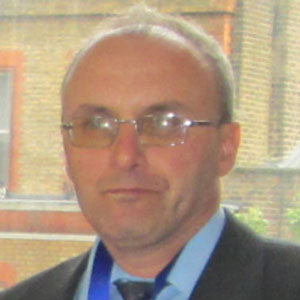
Title: Interpolation and Extrapolation of Curves and Functions
Keynote Talk
Dr. Dariusz Jacek Jakóbczak
Koszalin University of Technology, Poland
Abstract
Artificial Intelligence is applied for prediction and calculations of unknown values of data or coordinates. Decision makers, academicians, researchers, advanced-level students, technology developers, and government officials will find this text useful in furthering their research exposure to pertinent topics in AI, computer science, numerical analysis or operations research and assisting in furthering their own research efforts in these fields. Proposed method, called Two-Points Smooth Interpolation (TPSI), is the method of 2D curve interpolation and extrapolation using the set of key points (knots or nodes). Nodes can be treated as characteristic points of data for modeling and analyzing. The model of data can be built by choice of probability distribution function and nodes combination. TPSI modeling via nodes combination and parameter γ as probability distribution function enables value anticipation in AI, risk analysis and decision making. Two-dimensional curve is extrapolated and interpolated via nodes combination and different functions as continuous probability distribution functions: polynomial, sine, cosine, tangent, cotangent, logarithm, exponent, arc sin, arc cos, arc tan, arc cot or power function.
Biography
Dariusz Jacek Jakóbczak was born in Koszalin, Poland, on December 30, 1965. He graduated in mathematics (numerical methods and programming) from the University of Gdansk, Poland in 1990. He received the Ph.D. degree in 2007 in computer science from the Polish – Japanese Institute of Information Technology, Warsaw, Poland. From 1991 to 1994 he was a civilian programmer in the High Military School in Koszalin. He was a teacher of mathematics and computer science in the Private Economic School in Koszalin from 1995 to 1999. Since March 1998 he has worked in the Department of Electronics and Computer Science, Koszalin University of Technology, Poland and since October 2007 he has been an Assistant Professor in the Chair of Computer Science and Management in this department. His research interests connect mathematics with computer science and include computer vision, artificial intelligence, shape representation, curve interpolation, contour reconstruction and geometric modeling, numerical methods, probabilistic methods, game theory, operational research and discrete mathematics.
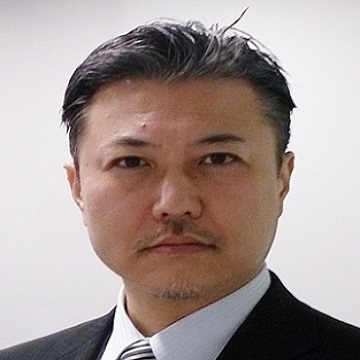
Title: Structural Modulations in Functional Components by Stereolithographic Additive Manufacturing for Energy and Material Flows
Keynote Talk
Prof. Soshu Kirihara
Osaka University, Japan
Abstract
In stereolithographic additive manufacturing (STL-AM), 2-D cross sections were created through photo polymerization by UV laser drawing on spread resin paste including nanoparticles, and 3-D models were sterically printed by layer lamination. The lithography system has been developed to obtain bulky ceramic components with functional geometries. An automatic collimeter was newly equipped with the laser scanner to adjust beam diameter. Fine or coarse beams could realize high resolution or wide area drawings, respectively. As the row material of the 3-D printing, nanometer sized metal and ceramic particles were dispersed into acrylic liquid resins at about 60 % in volume fraction. These materials were mixed and deformed to obtained thixotropic slurry. The resin paste was spread on a glass substrate at 50 μm in layer thickness by a mechanically moved knife edge. An ultraviolet laser beam of 355 nm in wavelength was adjusted at 50 μm in variable diameter and scanned on the spread resin surface. Irradiation power was changed automatically for enough solidification depth for layer bonding. The composite precursors including nanoparticles were dewaxed and sintered in the air atmosphere. In recent investigations, ultraviolet laser lithographic additive manufacturing (UVL-AM) was newly developed as a direct forming process of fine metal or ceramic components. As an additive manufacturing technique, 2-D cross sections were created through dewaxing and sintering by UV laser drawing, and 3-D components were sterically printed by layer laminations with interlayer joining. Though the computer aided smart manufacturing, design and evaluation (Smart MADE), practical materials components were fabricated to modulate energy and material transfers in potential fields between human societies and natural environments as active contributions to Sustainable Development to Goals (SDGs).
Biography
Soshu Kirihara is a doctor of engineering and a professor of Joining and Welding Research Institute (JWRI), Osaka University, Japan. In his main investigation “Materials Tectonics” for environmental improvements of “Geotechnology”, multi-dimensional structures were successfully fabricated to modulate energy and materials flows effectively. Ceramic and metal components were fabricated directly by smart additive manufacturing, design and evaluation (Smart MADE) using high power ultraviolet laser lithography. Original stereolithography systems were developed, and new start-up company “SK-Fine” was established through academic-industrial collaboration.
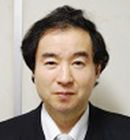
Title: Network theoretic classification of cyber attacks and its application to preventing outbreak of poteintial attacks
Keynote Talk
Prof. Shigeo Akashi
Tokyo University of Science, Japan
Abstract
There exist various kinds of modern cyber attacks bringing about many network failures over the Internet. Actually, the countermeasures preventing authenticated network users from being attacked by these cyber attacks seem to be case-by-case, Therefore, it is much better for the authenticated network users to be provided with more generic and integrated countermeasures having universal effects on the Internet. This is the reason why we had better classify modern cyber attacks from the point of view of the network theory and investigate the mutual relations between a certain cyber attack and another one. Here we can show several problems which remain to be solved for the purpose of constructing the systematic classification of cyber attacks as the following:
1. Problem asking which network segments cyber attacks originate in, local segments or remote ones.
2. Problem asking which layer of the OSI Reference Model is based on, the datalink layer, the network layer, the transport layer, and so on.
3. Problem asking whether cyber attacks can evolve maliciously or not.
4. Problem asking whether or not a cyber attack is compatible jointly with another one.
5. Problem asking whether or not a newly born hybrid cyber attack can bring about some newly born synergetic malicious effects which have never been observed yet with any of factorial cyber attacks.
In this talk, we introduce some hybrid cyber attacks which has been more threatening by artificial joint combination of a cyber attack with another one.
Biography
Shigeo Akashi is affiliated with the Department of Information Sciences of the Faculty of Science and Technology at Tokyo University of Science. He was a Chair Professor ot the department from 2015 through 2017 and has been approved as Distinguished Cisco Certified Active Instructor, which is authorized by Cisco Networking Academy since 2013. His major research areas are applied mathematics and network theory. He has been being a member of the Experts Committee leading scientific education for Japanese senior high schools, which is authorized by Ministry of Education, Culture, Sports, Science and Technology of Japanese Government since 2016. Dr. Yao Tong is affiliated with the Department of Information Sciences of the Faculty of Science and Technology at Tokyo University of Science. Her major research area is cybersecurity. She has been being a member of the Experts Committee leading scientific education for Japanese senior high schools, which is authorized by Ministry of Education, Culture, Sports, Science and Technology of Japanese Government since 2019.
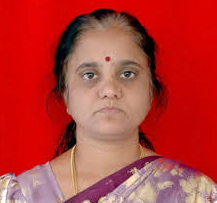
Title: Computation of combined electrical and magnetic field on dissipative immisicible Newtonian fluid/Nanofluid dynamics
Keynote Talk
Prof. J.C. Umavathi
Gulbarga University, India
Abstract
This article presents numerical simulations for nonlinear mixed convection heat transfer in an enclosure divided into two immiscible regions comprising a non-conducting Newtonian viscous fluid and an electromagnetic viscous nanofluid. An interfacial stress condition is employed at the junction between the two immiscible fluid zones. The coupled transport equations for both a Newtonian fluid and a Newtonian electromagnetic nanofluid are formulated, rendered dimensionless and then solved numerically with finite difference method adopting the efficient Southwell Over-Relaxation method subject to appropriate boundary conditions. The influence of pertinent parameters including the Grashof number, Brinkman number, Hartmann number, electric field load parameter, nanoparticle solid volume fraction in addition to different nanoparticles and base fluid material properties on the thermo-convection flow characteristics are discussed. The results indicate that flow rate is boosted with increasing convective and viscous dissipations, and electric field load parameter and it is depleted with greater Hartmann number and solid volume fraction reduce the flow rate. Significant elevation in both velocity and energy is produced with increasing electric load parameter (both short and open circuit cases). An increment in Grashof number decelerates the flow adjacent to the left plate and accelerates the flow at the opposite wall. The combined action of electrical and magnetic field exerts a more dramatic influence on transport characteristics compared with thermal buoyancy (Grashof number). By adding different nanoparticles (e.g. aluminium oxide, copper oxide and graphite oxide) and using alternative base fluids (blood, water and engine oil), more noticeable modifications in heat and momentum characteristics are achieved with copper oxide nanoparticles. The study finds applications in nano-doped electromagnetic hybrid fuel cells, medical flow processing (electromagnetic blood flow meters), sensing systems in chemical engineering etc.
Biography
Prof. J.C. Umavathi, Gulbarga University, India J.C. Umavathi completed her Post Doctral from the Department of Engineering, University of Sannio, Piazza Roma 21, 82100 Benevento, Italy. She is working as Professor in the Department of mathematics, Gulbarga University since 1993. She has published more than 215 research articles in reputed international journals. She is a recipient of Kalpana Chawla Young Scientist award, Sir J.C. Bose award and Erasmus Mundus Fellowship.
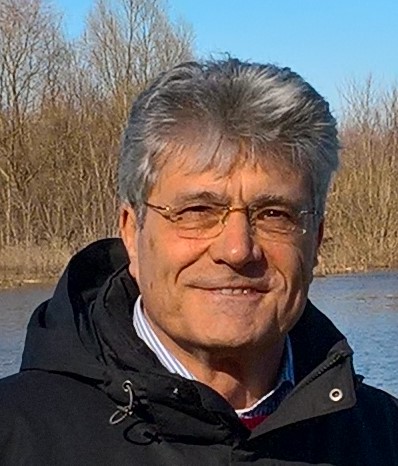
Title: Laminar Forced Convection Enhancement in Mini Ducts by Nanofluids and Ribs
Keynote Talk
Prof. Oronzio Manca
The University of Campania Luigi Vanvitelli, Italy
Abstract
Heat transfer of fluids is very important to many industrial heating or cooling equipments. Convective heat transfer can be enhanced passively by changing flow geometry, boundary conditions or by enhancing the thermal conductivity of the working fluid. An innovative way to improve the thermal conductivity of fluids is to introduce suspended solid nanoparticles and ribs. In the last years several investigations have been accomplished to evaluate the convective heat transfer enhancement in nanofluids and ribs. Moreover, ducts with non-circular cross sections have been extensively studied by several investigators and today are widely adopted in many thermal device applications.
In this paper a numerical investigation on laminar forced convection flow of a nanofluid, water–alumina nanoparticles, in a mini duct with triangular cross section is accomplished with the lower heated surface with transversal ribs. A uniform heat flux on the bottom surface of the heat sink is applied and a mixture model approach is employed to simulate the nanofluid flow. The analysis is performed for a three-dimensional combined conductive-convective heat transfer in a square section with triangular duct, at steady state regime.
Results are presented in terms of temperature and velocity distributions, surface shear stress and heat transfer convective coefficient, Nusselt number and required pumping power profiles for different nanoparticle volume fractions. Comparison with results related to the fluid dynamic and thermal behaviors are carried out in order to evaluate the enhancement, with respect to the base fluid, due to the presence of nanoparticles for the different volumetric concentration values.
Biography
Oronzio Manca is professor at Università degli Studi della Campania "Luigi Vanvitelli", Italy. Coordinator of the PhD courses in Industrial and Information Engineering. The main scientific activities are on Heat Transfer and Applied Thermodynamics. Member of the Scientific Council of International Center for Heat and Mass Transfer, American Society of Mechanical Engineering, Associazione Italiana Gestione Energia, Unione Italiana di Termofluidodinamica. Invited Professor at University of Paris-Est Marne-la-Vallée. Author or co-author of 560 scientific papers (165 on international peer reviewed journals). Member of Editorial Boards for "Advances in Mechanical Engineering", "Heat Transfer Research", "Inventors", "Journal of Engineering", and "Thermal Science and Engineering Progress.
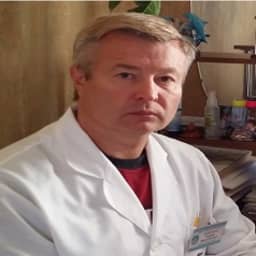
Title: The Creature of the New Effective Methods Modernization Preservative Solution for Red Blood Cells by Means Preparations of Nanotechnology
Invited Talk
Dr. Andrey Belousov
Laboratory of Applied Nanotechnology of Belousova, Ukraine
Abstract
Recently the FDA has tightened and increased the assessment and acceptance criteria making it potentially more difficult and expensive to bring new RBCs storage systems to market. Although the regulatory agencies are to be commended for focusing on the safety of new therapies and devices for patients, there are concerns that the regulatory requirements for RBC storage systems have become excessive and are hindering progress. Technology developers are unwilling to take on the risk that a random poor quality RBCs component could jeopardize the success of licensure tests and clinical trials of their new blood storage systems and their significant financial investment. The researches has proved that now of magnetite nanoparticles are able not only to considerably reduce hemolysis, and thereby prolong storage time of the blood’s heparinized, influence on activity of adenosinetriphosphateses of erythrocytes, regulated transmembrane exchange, but also to extracorporeally influence on cellular apoptosis. The above was the basis for the choice of the theme of this study, devoted to the learning of the use of nanotechnology to correct the functional activity of red blood cells at the storage stages at a positive temperature. The main purpose of the first stage of the study is to develop a simple and practical method of additive modernization of preservation solutions that does not violate the compliance requirements, improves the quality, efficiency and safety transfusion of red blood cells. It was established that saline NaCl which had previously been processed by magnetite nanoparticles (ICNB) had a marked membrane-stabilizing effect, inhibits haemolysis and increasing the sedimentation stability of preserved RBCs. The complex analysis of the obtained data allowed to determine the primary mechanisms effect of the saline NaCl which had previously been processed by ICNB on the preserved RBCs. The proposed method of additive modernization of preserved RBCs was adapted to the production process. The optimisation results were obtained in creating a simple and practical method of additive modernization of preservation solution that does not violate the compliance requirements, improves the quality, efficiency and safety transfusion of RBCs.
Biography
Andrey Nikolaevych Belousov is DM, Professor. Author a new medicine products – nanotechnology preparations based on magnetite nanoparticles (Fe3O4) of the size 6-12 nm: the preoral form - Micromage-B (officially registration in Ukraine); Magnet-controlled sorbent brand of MCS-B (officially registration in Ukraine and was allowed for medical practice); NanoBiocorrector for intravenous application – ICNB (intracorporal nanosorbent). Author a new program (PHUAS) for estimation degree the severity of the patient. The published more 200 scientific works. At now Andrey Belousov - the Head of Laboratory Applied Nanotechnologies in Ukraine, Professor of Department Anesthesiology, Intensive Care, Transfusiology and Hematology Kharkov Medical Academy of Postgraduate Education.

Title: Forced convection of MHD-Boundary layer steady flow past thin needle with variable wall temperature in Casson nanofluid
Invited Talk
Dhone Appasaheb Sharanappa
Gulbarga University, India
Abstract
The steady flow and heat transfer over a thin needle with variable wall temperature using Casson nanofluid is studied. The conservation equations are then reduced to coupled nonlinear ordinary differential equations by means of similarity transformations. The resulting reduced equations are solved numerically by adopting shooting technique and bvp4c algorithm available in MATLAB software. The Tiwari and Das model is incorporated to modulate the nanofluid. The metallic nanoparticles such as gold, copper, silver and diamond are suspended in blood (base fluid). The velocity, temperature, skin friction coefficient and Nusselt number are computed and presented in graphical and tabular forms. The presence of Cassion parameter boosts the velocity, but declines the temperature. The Nussult values are increased using nanofluid in comparison with the regular fluid. Numerical solutions are validated with the literature for limiting conditions and are in good agreement.
Biography
Dhone Appasaheb is working (registered for Ph.D.) under the guidance of Professor J. Prathapkumar, Chairman, Department Of Mathematics, Gulbarga University, Kalaburgi-585 106, Karnataka, India. He has been working as an Assistant Professor at Sangameshwar College [Autonomous], Solapur [Maharashtra] India. He has co-authored 9 text books and one single authored book on Mathematics (semester wise/CGPA Pattern/CBCS Pattern) which are very much useful for B.Sc. students of PAH Solapur University, Solapur.
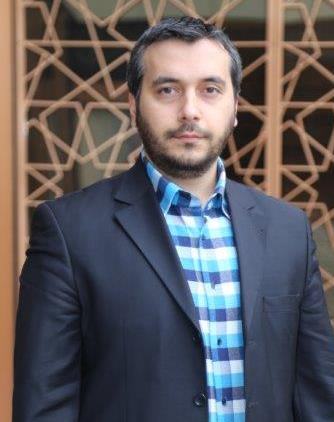
Title: Performance Affecting Parameters of Hybrid Nanofluids
Invited Talk
Dr. Hasan KÖTEN
Istanbul Medeniyet University, Turkey
Abstract
Hybrid nanofluids are prepared by blending two different kind of nanoparticles in the same basefluid to have greater thermophysical, optical, rheological, and morphological properties. Hybrid nanofluids are projected to replace simple nanofluids due to quite a number of reasons such as wide absorption range, lower extinction, high thermal conductivity, low pressure-drop, and low frictional losses and pumping power as compared to the mono nanofluids. Hybrid nanofluids have been tested for various applications like solar collectors, photovoltaic thermal applications, electronic component thermal management, photovoltaic thermal management, machine cutting, engine applications, and automotive cooling.This presentation will lead to further projects in different research.
Biography
Assoc. Prof. Hasan KOTEN graduated from Mechanical Engineering Department with honor of degree in 2007. At the same time, he received a BSc degree in Electrical and Electronics Engineering Department as a double major. Hasan KOTEN worked in the first full geometry engine design project for The Scientific and Technological Research Council of Turkey (TUBITAK). During his Ph.D., he worked as a visiting scholar at the Ohio State University Center for Automotive Research (CAR). Hasan KÖTEN also worked as a consultant for TUBITAK Domestic Electric Vehicle Design project in 2017. He attended to CEDP group at Brunel University as a post-doctorate researcher in 2018. Assoc. Prof. Hasan KÖTEN is Head of Mechanical Engineering of Istanbul Medeniyet University, currently. He leaded number of projects, MSc and PhD thesis in this combustion field. He attended and presented more than 100 conference proceedings and published about 30 articles indexed in SCI and SCI-e. He is awarded by TUBITAK 2238 programme with first degree over all national PhD thesis applications

Title: Impact of MGNREGA programme and assessment of livelihood status of unemployment youths migrated from Urban and Periurban districts of Karnataka State during the amid COVID19 Pandemic
Invited Talk
Dr. Triveni Mithra
Kalinga University, India
Abstract
The Mahatma Gandhi National Rural Employment Guarantee Act (MGNREGA) is an Indian law that aims to guarantee the ‘right to work’ and ensure livelihood security in rural areas by providing at least 100 days of guaranteed wage employment in a financial year to every household whose adult members volunteer to do so unskilled manual work. This flagship programme was started during 2006, almost all Indian States and UTI were effectively implemented MGNREGA for upliftment of rural population and eradication of poverty. During COVID19 pandemic crisis many urban unemployed youths were migrated to the rural population and they are actively participated in MGNREGA to maintain the livelihoods of their families. The Government of India has increased the budget allocation > 60% especially for urban migrants and rural unemployed youths in FY2020. An amount of Rs. 60,000 crores were allocated for MGNREGA at national level. In Karnataka State, approximately 44.86 lakhs rural unemployed youths and urban migrants were benefited this programme in FY 2020 which is the highest in the last five years. In the interest of National economic policy and programme implementation, the present study attempt to assess the impact of MGNREGA programme and how it can supports to the livelihoods of their migrant families of unemployment youths during COVID 19 pandemic crisis. A pilot based survey was conducted in the selected districts of Karnataka State; a total 120 urban migrant respondents were interviewed through pretested and tested questionnaires in accordance with standard operating protocol (SOP). Asper the research findings, the mean age of the respondents was 34.55 with SD 1.22 years .The participation level of Male was (84.0 %) And female was (16.0%). (45.0%) of respondents were completed UG and Post-graduation degree and (2.5 %) awarded higher degree Ph.D. The mean men days were 194 days with average wage of 287 Rupees at the higher rate. (95%) of the respondents were spent earned wage for purchasing of food grains, cloths and children education etc. An economic wage index of MGNREGA in rural population was 54.56 units per person it was found to be statistically significant (p=0.001, modified kappa agreement k is 0.86). Summing of the present study concludes that, the MGNREGA is one of the successful programmes; it provides the social and economic security for urban migrants and rural youths. Finally, based on the research findings and practical experience, it has also been suggested that a high rise in MGNREGA wages could even lead to the possible exclusion of the poorest of the poor in Rural area, the scheme became lucrative even for the above poverty line.
Biography
Dr. Triveni Mithra CA, from Raipur University, India
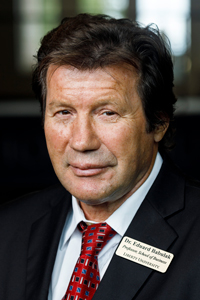
Title: World Global Village & Smart Age
Plenary Talk
Prof. Eduard Babulak
National Science Foundation, United States
Abstract
The Third Milennium with its promise of Smart Cyberspace made a World a Global Village bringing people together 24/7 at anytime and anywhere. In light of ongoing dramatic developments of Covid- 19 related crisis, Humanity and life as we know it is challenged with uncertanty and fear of becoming seriously ill and put family in danger. The effective application of AI, Robotics, Ubiquitous access to highspeed Internet 24/7 and Big Data created a platform for Smart Cyberspace that has become reality for people worldwide. The application of globaly distributed information system, such John Hopkins Corona Map, in conjunction with collecting real-time data from the Electronic Health Record (EHR) in the nation and worldwide has become essential for humanity fight againts Covid-19 and search for the most effective vaccine and medication. Provision of best health services, scientific analysis and collections of real data contributes to global provison of health to communities worldwide to safe lives. Having a healthy population is essential to successful economies worldwide. The author promotes creation of global multidisciplinary teams of experts in support of research, innovation and developments of cutting-edge smart technologies creating a n ultra-smart cyber systems that will contribute effectively to best health provision 24/7 for everyone and anywhere on the planet.
Biography
Professor Dr. Eduard Babulak is accomplished international scholar, researcher, consultant, educator, professional engineer and polyglot, with more than thirty years of experience. He served as successfully published and his research was cited by scholars all over the world. He serves as Chair of the IEEE Vancouver Ethics, Professional and Conference Committee. He was Invited Speaker at the University of Cambridge, MIT, Purdue Speaker Photo University, Yokohama National University and University of Electro Communications in Tokyo, Japan, Shanghai Jiao Tong University, Sungkyunkwan University in Korea, Penn State in USA, Czech Technical University in Prague, University at West Indies, Graz University of Technology, Austria, and other prestigious academic institutions worldwide. His academic and engineering work was recognized internationally by the Engineering Council in UK, the European Federation of Engineers and credited by the Ontario Society of Professional Engineers and APEG in British Columbia in Canada. He was awarded higher postdoctoral degree DOCENT – Doctor of Science (D.Sc.) in the Czech Republic, Ph.D., M.Sc., and High National Certificate (HNC) diplomas in the United Kingdom, as well as, the M.Sc., and B.Sc. diplomas in Electrical Engineering Slovakia. He serves as the Editor-in-Chief, Associate Editor-in-Chief, Co- Editor, and Guest-Editor. He speaks 16 languages and his biography was cited in the Cambridge Blue Book, Cambridge Index of Biographies, Stanford Who’s Who, and number of issues of Who’s Who in the World and America.

Title: The use of Continuous Strain Monitoring in order to Assess Ground Support Behaviour and Conduct Quality Control
Keynote Talk
Prof. Nicholas Vlachopoulos
Royal Military College of Canada, Canada
Abstract
Through the use of a novel distributed optical strain sensing (DOS) technique, it has been determined that such a technique can add value not only to the performance and behaviour of ground support systems but also provides an indication of the quality and consistency of the grout that is used within an instrumented fully grouted rock bolt ground support system. Unlike conventional, discrete strain measurement methods, the optical technology captures a distributed strain profile along the length of an optical fiber. This is akin to sampling at a spatial resolution of 0.65 mm whereby a discrete measurement is captured at each 0.65 mm interval along the entire length of a ground support system. This paper builds on previous observations utilizing additional examples (as part of the larger research program) where material flaws, gaps and voids were detected during the testing stage of fully grouted rock bolt systems that were being tested with a view of determining an optimized embedment length. After testing, the rock bolt support system specimens were cut open and a forensic, visual assessment validated the DOS results. The use of the fiber optic technique made it possible to capture complex support behaviour not before captured by conventional means of instrumenting rock bolts. The technique also can provide insight into the type of rock bolt installation that is being conducted and not only determine the effectiveness of the bolt system (i.e. the use and effectiveness of mechanical anchor, quality of grout) but also optimize the support design. The DOS technique has a tremendous potential to play a significant role in quality control with respect to the performance of such ground support systems.
Biography
Dr. Nicholas Vlachopoulos is a Professor of Civil Engineering at the Royal Military College of Canada, Cross-Appointed at Queen’s University and is a Director at the Queen’s-RMC GeoEngineeirng Center. He is also the Founder and Director of the RMC Green Team that addresses Infrastructure and Environmental Engineering issues within the Canadian Department of National Defence. He specializes in the optimization of support systems of underground works, rock mechanics, geotechnical monitoring and military sustainability. He is a professional engineer (in Canada and in Greece) with over 25 years of experience in geotechnical / geological engineering, sustainability works and project management on major construction and research projects. He has worked at well over 150 locations nationally and internationally. Dr. Vlachopoulos was recently awarded the Thomas Roy Award by the Canadian Geotechnical Society (CGS) for “outstanding contribution to Engineering Geology in Canada”; This is the Premier Engineering Geology Award in Canada. He is also the immediate past Engineering Geology Division Chair for the CGS and Canadian Representative of the IAEG.
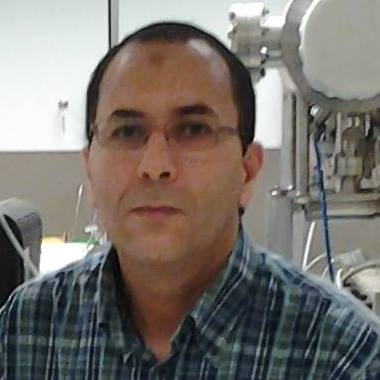
Title: Total Energy Behavior of ZnO Zin Blend Structure a Molecular Dynamics Prediction
Keynote Talk
Dr. Yahia CHERGUI
IGEE Institute, University M’Hamad Bougara of Boumerdes, Algeria
Abstract
In order to see the effect of extended pressure and temperature on total energy, and phase transition of Zinc Oxide zinc blend type; we use the technique of molecular dynamics and DL_POLY_4 to run the calculations on RAVEN supercomputer of Cardiff University in UK. We choose 5832 atoms, where the interatomic interaction are modeled by Coulomb-Buckingham potential. The range of pressure and temperature are 0-100GPa and 300-3000K respectively, we focus on the effect of the previous conditions of pressures and temperatures on total energy, and the phase transition of Zinc Oxide, using equilibrium time as a new method to confirm the phase transition. Although no more data under these conditions, our results are in agreement with available information. This work has great importance in different field of industry especially in pharmacetics and medcine.
Biography
Yahia CHERGUI has completed his PhD from Badji Mokhtar University in Annaba, Algeria. His research field is Physics(condensed matter, simulation by molecular dynamics). He is a lecturer in Boumerdes University( Electrical & Electronics Engineering Institute) since 2012. He has published more than 7 papers in reputed journals and has been serving as a referee with condensed matter journal (IOP), Energy journal (Elsevier), and recently accepted to be a reviewer of American Journal of Modern Physics. He did all his PhD work in Cardiff University in UK.
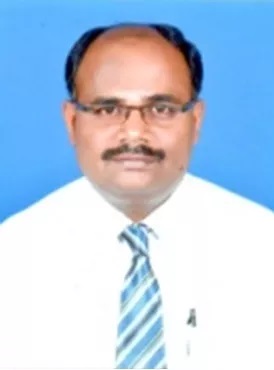
Title: Study of anxiety and fear of COVID19 Pandemic in Indian Context
Keynote Talk
Dr. Basavarajaiah
Karnataka Veterinary Animal and Fisheries Sciences University (B), India
Abstract
It is unfragile situation to fight against COVID19 pandemic. Presently we are in the midst of worldwide pandemic crisis , with many places at least partially shut down , others struggling to reopen safely. In Indian situation some of the States where the infection rates are worse. Other states are bracing for what may come next .And all of us are watching the news headlines and wondering , when is this going to end by deadly virus. For many people , the uncertainty surroundings novel corona virus is the hardest thing to handle the bad situations. Researcher and policymakers would not be aware of diseases end , exactly how we will be impacted , how long this will last or how bad things might get. And that makes it all too easy catastrophize and spiral out into overwhelming dread and panic. However, there many challenges we can do even in the face of this unique crisis to manage anxiety , fear and psychological impact of general public’s and front line health care professionals ( I and II wave). In this unique health emergency situation numerous micro and macro research findings is very necessary to frame the new strategies to manage the psychological depression, anxiety and stress at population level. The present study addressed the so many bavioural postulates on anxiety and COVID fear. On methodology aspects, we randomly had chosen 650 respondents from the different Covid clusters. The FCoV-19 scale were administered for all respondents, data sets were collected through virtual platform. As per the resulted findings, the prevalence of depression (78.56%) odds 8.77, p<0.001, anxiety (84%) odds 4.85, p<0.00, stress (74.0%) odds 5.32, p<0.0087, fear (86.54%) odds 4.02, p<0.001, isolation and loneliness (78%) odds 7.99, p<0.0009. The present study concludes that , there is high level of anxiety, fear and stigma among health care professionals and general population was noticed. Considering stable mental health by spiritual manner, family supports, psychological counseling is more essential factor and play a significant role in strengthening immunity.
Biography
Dr.Basavarajaiah D.M working as an Associate Professor and Head , Department of Statistics and Computer Science, Dairy Science College, Karnataka Veterinary Animal and Fisheries Sciences University (B), Hebbal, Bangalore. My area of research heeds Statistical theory, Statistical modelling on high dimensional datasets of Agriculture, Engineering, Medicine, Veterinary and animal Sciences. Penned sixty eight research articles and five academic books. Serving as an editorial Board Member and Scientific Board advisor of Various International indexed journals. Life Member of various academic organizations. Honoured several accolades for my academic and research Excellency “Chartered Scientist award stalwart by Science Council, United Kingdom in Collaboration with Royal Statistical Society. Best Reviewer award -2016 ‘TRANS STELLAR’ Journal Publications and Research Consultancy ,TJPRC Ltd., (NAAS rated Journals), Fellow of Royal Statistical Society ,UK (London), Fellow of Mathematical Society ,UK (London), Bharathshikshratana and Indo-Dubai Achiever’s Pacific award honoured by Global Society of health and educational growth new Delhi, Best reviewer -2015, Best scientific Board advisor - 2016 and Best editorial Board Member awards bestowed by International academy of Engineering Science and Technology (IASET),USA.

Title: Sustainable Waste Management through Circular Economy, Technology, Policy, and Participation
Keynote Talk
Prof. Mervat El-Hoz
CEO, Environmental Engineering Consulting, Lebanon
Abstract
Municipal solid waste management (MSWM) has become one of the most complex global environmental issues for urban areas in various countries. It is a very complex system, and misuse of any technology may pollute soil and water with chemicals and lead to climate change. This paper examines MSWM through circular economy, technologies, policies, and participation of all stakeholders in developed and developing countries. Investigations were undertaken to understand the factors and barriers that affect MSWM and the reasons why many countries are unsuccessful in this area. The study found that MSWM has many stakeholders and the municipalities that are directly responsible for this sector are subject to social, political, institutional, financial, economic, and technical factors, in addition to the availability of land. A number of developed countries have achieved important results in this sector. For developing countries, they must move to smart waste management, which includes solid waste prevention, minimization, separation at source, reuse and recycling; and to apply the circular economy approach to their waste policies as it improves sustainability and ultimately leads to improvements in economic and environmental performance. When adopting any technology, it must take into account climate change, appropriate infrastructure, pollution control system, maintenance, development, and following up on the requirements and regulations of the country. It also requires changes in perception and performance and the involvement of all stakeholders at all levels. Achieving this will not be easy, therefore, integrated MSWM strategies must be developed to be applied in the short, medium and long terms.
Biography
Experienced Professor with a demonstrated history of working in the higher education and consulting industry. An Environmental Engineer skilled in Waste Management, Water and Wastewater Treatment, Water Resource Management, & Air Pollution Control. Strong education professional graduated from University of Sydney, Australia; and Middle East Technical University, Turkey.
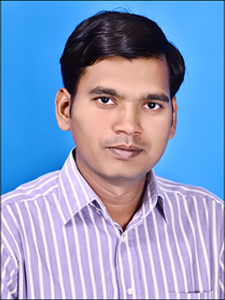
Title: Flow characteristics of micropolar nanofluid sandwiched between viscous permeable fluids
Invited Talk
Prashant S. Sutkar
Gulbarga University, India
Abstract
The flow and heat transfer of micropolar nanofluid sandwiched between porous medium in a horizontal channel is analyzed. The model is developed to study the behavior of micropolar nanofluid taking into account the solid volume fraction and porous parameter. Using Darcy’s law for porous medium and Tiwari Das model for nanofluid governing equations are obtained. The governing equations are solved using regular perturbation method. Water and glycerin is taken as base fluid and copper as nanoparticles for the analysis. Analysis is carried out on the flow characteristic for different values of Grashof number, Prandtl number, Eckert number, Reynolds number, porous parameter and solid volume fraction. It is found that Grashof number, Prandtl number, Eckert number promotes the flow. Reynolds number and material parameter suppress the flow. Moreover for different physical parameter, the rate of heat transfer, mass flow rate and skin friction is illustrated in table form. The solvent viscosity for air, water and glycerin, the cell rotation on the flow is presented in tabular form for 20% and 40% concentration.
Biography
I am working as Assistant Professor of Mathematics in NES Science College, Nanded, Maharashtra, India. I am having ten years of teaching experience to graduate and post graduate students of Mathematics and Applied Mathematics. I have published one book and two research papers. At present I am pursuing for my Doctoral degree in Fluid Mechanics.
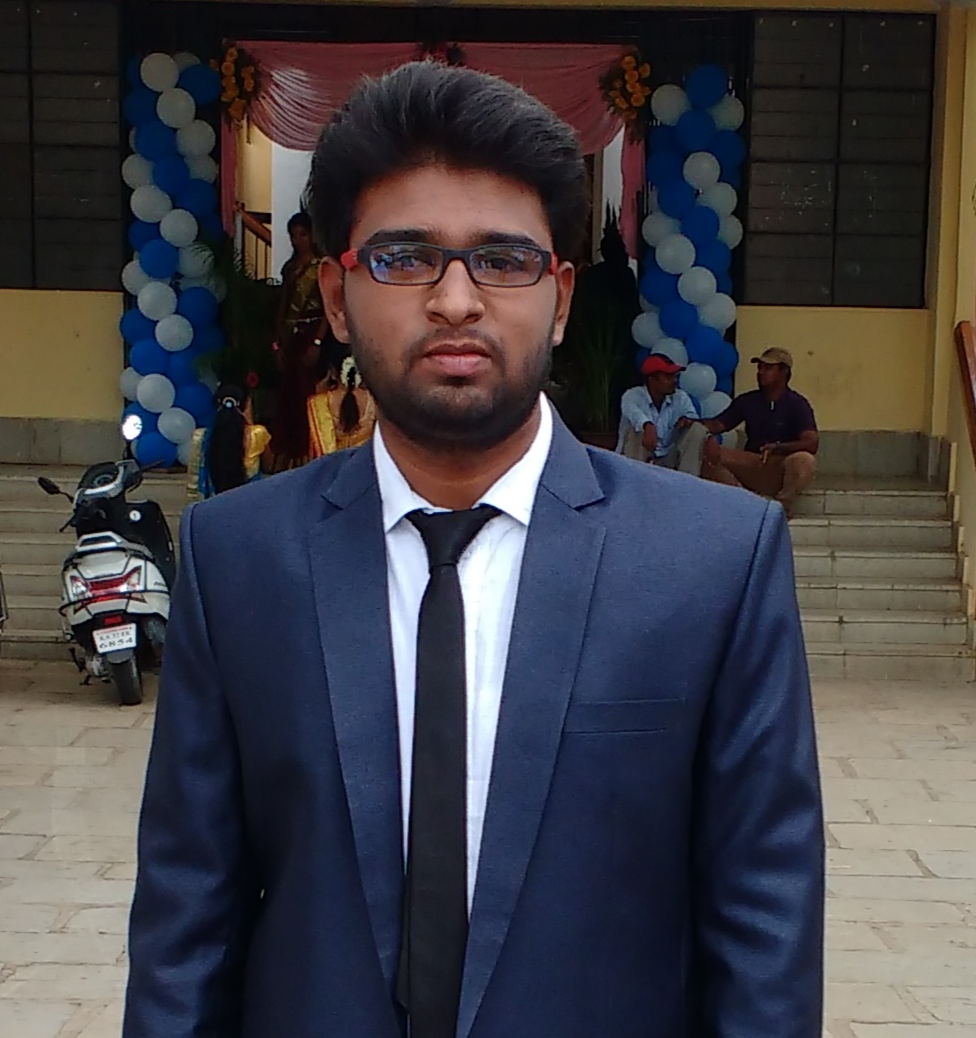
Title: Micropolar Fluid Flow Past a Two-Dimensional Body Ampled with Nanofluid: Applications in Polymer Coating
Invited Talk
Mahesh Ashok Kumar
Gulbarga University, India
Abstract
Non-Newtonian flow from a wedge constitutes a fundamental problem in chemical engineering systems and is relevant to processing of polymers, coating systems, etc. Drived by such applications, the numerical solutions are computed for convective boundary layer flow of incompressible micropolar nanofluid from a two-dimensional wedge. Viscous dissipation and heat sink effects are included. Employing suitable similarity transformations, the balance law equations are reduced to first order nonlinear ordinary equations. The Runge-Kutta-Fourth order method is accepted to find the numerical solutions of the reduced equations. Primary and secondary shear stress, wall couple stress, Nusselt number, microrotation velocity, and temperature were computed for the effect of nanoparticle volume fraction, vortex viscosity parameter (micropolar rheological), Eckert number (viscous dissipation), Falkner-Skan (pressure gradient) parameter, micro-inertia density, and heat sink parameter for different types of nanoparticles. It was observed from the study that the temperature and thermal boundary layer thickness are both suppressed with increasing wedge parameter and wall heat sink effect, which is beneficial to temperature regulation in polymer coating dynamics. Also, both primary and secondary skin friction components were reduced with increasing wedge parameter. Nusselt number was also enhanced substantially with greater wedge parameter and nanoparticles.
Biography
Mahesh Ashok Kumar completed the Master degree in 2017 and he taught for Post Graduate students. At present he is persuing for his Doctoral degree in Gulbarga University. His areas of interest are micropolar fluids, porous media, Mangentohydordynamics and nanofluids.

Title: Hydrogen as a Future Energy Carrier for the Automotive Domain and the Efficacy of Metal Hydride Hydrogen Storage Systems in Fuel Cell Vehicles
Invited Talk
Shyam Sashvat
Overall Student Coordinator at PSG Tech, India
Abstract
As per sources from Forbes, 84% of the world’s energy is met by fossil fuels whereas the remaining 16% demand is taken care of by non-fossil fuels like solar, wind, biomass energy etc. Global leaders are trying their best to reduce the fossil fuel dependency so as to stride towards a greener and cleaner future. Hydrogen is considered by many to be the “Future Green Fuel” and a very promising contender to the conventional fuels which are available currently. The reason for hydrogen being chosen as an alternative owes to its remarkable properties such as exceptionally high energy content per unit mass (142 MJ/Kg, 3 times as that of gasoline), low mass density, and massive environmental and economic upsides. The current automotive industry is researching efficient and environment friendly approaches to the production of hydrogen, storage, purification and usage. Fuel Cell Electric Vehicles (FCEV) are becoming increasingly popular among the leading automotive companies all over the world. It involves a combination of Hydrogen storage system, battery system, motor and Fuel cell PMC. Present technologies of hydrogen production include Steam reforming of natural gas (48%), partial oxidation of heavy hydrocarbons (30%), partial oxidation of coal (18%) and electrolysis (4%). Extensive research is being conducted on improving the efficacy of hydrogen storage using various methods like high pressure gas cylinders, liquid hydrogen storage in cryogenic tanks, Metal hydrides, liquid chemicals, porous materials(carbon: 50-150K), carbon nanomaterials, glass microspheres etc. Out of these, usage of metal hydrides for hydrogen storage seems to be quite advantageous. A literature survey has been conducted by gathering data and figures from around 50 significant research articles and a comparison is drawn, the efficacy of metal hydride hydrogen storage systems is reviewed. A case study for future prospects of hydrogen storage in fuel cell vehicles has been discussed in this review article.
Biography
I am currently serving as the Overall student coordinator and student representative at the department of Mechanical Engineering, PSG college of Technology. I also work as a powertrain and electrical engineer for the Pegasus racing team which predominantly takes part in Formula Student Germany and Formula Bharat events including automotive research and development. As a part time work, I also function as the TEDx Organiser for my college and an executive member at the Global Leaders’ Forum. I participate in research activities involving Hydrogen Fuel cells, alternative energy storage technologies for green vehicle economy etc. I show interest towards projects related to the automotive sector especially in the EV Domain, since its the thick of the action lately. I have also penned a research paper related to the usage of Novel fresnel sheet solar concentrating system using thermoelectric generators and presented the same to the audience at ICARSES 2020. It bagged the second place in international category and the first place in national category. A best paper award was also provided for the same. Last month, I received the Young Kalam Innovator award for my work on solar vehicle technology. I have participated in various technical workshops, AICTE sponsored FDPs, STTPs, summits, conferences and so on. Alternative battery technologies such as the elimination of Cobalt which is the most expensive component in all EV batteries, development of Vehicle to Grid(V2G) concepts, usage of sulphide-based solid state batteries which have a longer life period as a replacement to the conventional batteries, graphene based batteries which can charge in less than 20 seconds etc are some of my primary areas of focus. Ultra fast charging, wireless charging concepts are also emerging ideas which can be incubated and researched upon. Since these innovations in charging infrastructure and battery technology can shape the EV industry for the greater good and also accelerate the adoption of more EVs, I am more inclined towards the same. At the moment, I am conducting literature surveys on alternate methods of hydrogen production and storage, since the conventional methods are proving to be futile.

Title: IoT Development: Challenges and Opportunities
Invited Talk
Dr. Balakrishnan Subramanian
Sri Krishna College of Engineering and Technology, India
Abstract
According to India Internet of Things (IoT) Market Forecast & Opportunities, 2020, IoT market in India is projected to grow at a CAGR over 28% during 2015 - 2020. IoT is being rapidly brought into use across diverse industry verticals to reduce operational and manpower costs, and increase operational efficiency. Consumer electronics, automotive & transportation, BFSI (Banking, Financial Services and Insurance), home & building, energy & utilities, retail, supply chain & logistic sectors, and manufacturing are the key emerging application areas where IoT technology is majorly being adopted. However, Indias IoT market is highly fragmented with numerous players operating across the value chain. With growing need for connectivity among devices, systems and services using variety of protocols and domains; automating business processes; and real-time monitoring & tracking of services and systems, Internet of Things (IoT) technology has been gaining increasing market traction over the last few years. In the IoT concept, a Thing can be any natural or man-made object that can be assigned an IP address and provided an ability to transfer data over a network.
Biography
Dr.S.Balakrishnan is a Professor and Head, Department of Computer Science and Business System at Sri Krishna College of Engineering and Technology, Coimbatore, Tamilnadu, India. He has 19 years of experience in teaching, research and administration. He has published over 20 books, 8 Book Chapters, 29 Technical articles in CSI Communications Magazine, 27 technical Blogs, 1 article in Electronics for You (EFY) magazine, 7 articles in Open Source for You Magazine and over 100+ publications in highly cited Journals and Conferences. Some of his professional awards include: Faculty with Maximum Publishing in CSI Communications 2017-2019, International Data Science Writer of the Year 2019, by Data Science Foundation, UK, with cash prize €900, MTC Global Outstanding Researcher Award, Inspiring Authors of India, Deloitte Innovation Award Deloitte for Smart India Hackathon 2018, Patent Published Award, and Impactful Author of the Year 2017-18. He acted as a Mentor and Jury member in ASEAN-India Hackathon 2021 and Evaluator for Toycathon 2021. His research interests are Artificial Intelligence, Cloud Computing and IoT. He has delivered several guest lectures, seminars and chaired a session for various Conferences. He is serving as a Reviewer and Editorial Board Member of many reputed Journals and acted as Session chair and Technical Program Committee member of National conferences and International Conferences at Vietnam, China, America and Bangkok. And he has acted as Mentor in Smart India Hackathon (SIH) 2020 Title Winner, with 1 Lakh Cash Prize. He has published 4 Granted Australian Patents, 29 Indian Patents on IoT Applications, 2 Design Patent Grant and 3 granted Copyright. Dr. Balakrishnan has been appreciated under India Book of Records 2021 for filing 18 patents over a period of 15 months. He is acting as an IEEE Brand Ambassador, T4 Ambassador and Bentham Science Publisher Brand Ambassador.

Title: Interfacial Engineering of PTAA/Perovskite for Improved Holes Extraction in Efficient Inverted Perovskite Solar Cells
Invited Talk
Dr. Li Yang
University of Macau, China
Abstract
Inverted perovskite solar cells (PSCs) have gained rapid progress and increasing research interests in recent years. Nowadays, poly (triaryl amine) (PTAA) is widely used as the hole transport layer (HTL) in inverted PSCs for its favorable highest occupied molecular orbital (HOMO) energy level (−5.2 eV), excellent carrier mobility, and low-temperature solution processability. However, its intrinsic hydrophobic property hinders the growth of high-quality perovskites on the PTAA film, which is one of the main obstacles that limits the further development of inverted PSCs. Herein, a donor-acceptor-donor type organic molecule, 4,4',4''-(1-Hexyl-1H-dithieno [3',2':3,4;2'',3'':5,6] benzo[1,2-d] imidazole-2,5,8-triyl) tris (N, N-bis(4-methoxyphenyl) aniline) (denoted as M2), is employed to modify the surface of PTAA. The PTAA/M2 composite hole transport layer facilitates the growth of perovskite films with enhanced crystallinity and carrier mobility. Using PTAA/M2 instead of pure PTAA as HTL, the power-conversion efficiency of inverted PSC increases from 18.7% to 20.2%. Furthermore, its operational stability is also significantly enhanced. Our methodology carves out a novel path for improving the efficiency and photostability of inverted PSCs.
Biography
Mr. Yang Li graduated from Lanzhou University with 2 bachelor's degrees in Pharmaceutical Chemistry and Applied Psychology in 2011 and won the title of Excellent Communist Youth League Model of Lanzhou University and Star of Self-improvement for Chinese College Students there. From 2012 to 2013, he worked as a research assistant in the research group of Prof. Wu Quanxiang and Prof. Wang Wei in the State Key Laboratory of Functional Organic Molecules, Lanzhou University, engaging in the extraction, separation, and total synthesis of natural products. From 2014 to 2016, he studied at the Department of Nanophysics, Gachon University in South Korea and got his master's degree in Nanophysics under the guidance of Professor Eun-choel Lee. From 2017 to 2018, he successively joined City University of Hong Kong and Southern University of Science and Technology as research assistant under the guidance of Professor Xu Xianyi and Professor He Zhubing, respectively. From 2019 till now, he was selected as a PhD candidate at the University of Macau, under the co-supervision of Prof. Guichuan Xing and Prof. Hui Pan. At present, he has published 6 SCI papers (4 with FF higher than 10), 4 conference papers, and 5 papers are now under submission. He has been committed to the process optimization and mechanism research of perovskite batteries and light-emitting devices recently. He has won the Ph. D. Scholarship of the Macau Talent for Science and Technology (2019-2022) and has participated in many academic conferences and made reports at home and abroad. He has won the Excellent Poster Award of the 12th Asia-Pacific Nano Hybrid Solar Cell Conference (Shenzhen, China 2018) and the Excellent Report Award of the 3rd International Conference on Applied Science and Engineering Technology (Dubai 2019). He delivered an oral presentation in the 3rd Optoelectronic Materials and Devices Development Symposium (Changsha, China 2020), and won the Best Popular Poster Award in Energy Science Field during Physical Science Online Week of Cell press, 2021.

Title: Design and operation of low energy consumption passive human comfort solutions
Invited Talk
Dr. Abdeen Omer
Energy Research Institute (ERI), United Kingdom
Abstract
The rapid growth during the last decade has been accompanied by active construction, which in some instances neglected the impact on the environment and human activities. Policies to promote the rational use of electric energy and to preserve natural non-renewable resources are of paramount importance. Low energy design of urban environment and buildings in densely populated areas requires consideration of wide range of factors, including urban setting, transport planning, energy system design and architectural and engineering details. The focus of the world’s attention on environmental issues in recent years has stimulated response in many countries, which have led to a closer examination of energy conservation strategies for conventional fossil fuels. One way of reducing building energy consumption is to design buildings, which are more economical in their use of energy for heating, lighting, cooling, ventilation and hot water supply. However, exploitation of renewable energy in buildings and agricultural greenhouses can, also, significantly contribute towards reducing dependency on fossil fuels. This will also contribute to the amelioration of environmental conditions by replacing conventional fuels with renewable energies that produce no air pollution or greenhouse gases. This study describes various designs of low energy buildings. It also, outlines the effect of dense urban building nature on energy consumption, and its contribution to climate change. Measures, which would help to save energy in buildings, are also presented.
Keywords: Renewable technologies, Built environment, Sustainable development, Mitigation measures.
Biography
Abdeen Mustafa Omer (BSc, MSc, PhD) is an Associate Researcher at Energy Research Institute (ERI). He obtained both his PhD degree in the Built Environment and Master of Philosophy degree in Renewable Energy Technologies from the University of Nottingham. He is qualified Mechanical Engineer with a proven track record within the water industry and renewable energy technologies. He has been graduated from University of El Menoufia, Egypt, BSc in Mechanical Engineering. His previous experience involved being a member of the research team at the National Council for Research/Energy Research Institute in Sudan and working director of research and development for National Water Equipment Manufacturing Co. Ltd., Sudan. He has been listed in the book WHO’S WHO in the World 2005, 2006, 2007 and 2010. He has published over 200 papers in peer-reviewed journals, 50 review articles, 5 books and 50 chapters in books.
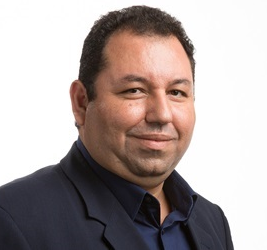
Title: Artificial Intelligence in Transportation: Techniques and Applications
Invited Talk
Prof. El Sayed Mahmoud
Sheridan College (Oakville), Canada
Abstract
The speedy evolution of Artificial Intelligence techniques promoted the development of innovative and effective solutions for Transportation. This talk aims to present Artificial Intelligence techniques and their applications for planning, designing and control transport network structures. The presentation focuses on how to use machine learning, image processing and optimization methods for automatic Incident Detection, Traffic flow prediction and Autonomous Vehicles' safety.
Biography
El Sayed has moved from Computer Engineering graduate to fifteen years of professional experience in Applied Computing. Then, he earned another fifteen years of academic experience in Applied Computer Science, focusing on developing innovative solutions for healthcare and business problems by combining software engineering, Artificial Intelligence and Cloud Computing techniques. These thirty years of diverse experiences enabled El Sayed Mahmoud to pioneer the Applied Computing field. In 2013, El Sayed obtained a Ph.D. in Computer Science and started his current position as a professor of Applied Computing at Sheridan. As a professor, he taught introductory and upper-level undergraduate courses in computer science, authored twenty scientific papers, gave twelve conference talks, overseen the creation of many innovative healthcare and business solutions. El Sayed also supervised students completing their theses and led Artificial-Intelligence(AI)-based research projects as an active principal investigator at the Centre of Mobile Innovation (CMI). He has also led the collaborative effort to develop a new Honours Bachelor of Computer Science degree with specializations in cloud computing, data analytics and game engineering. El Sayed was invited as a speaker for Guelph Food Safety Seminar in April 2019 to present the role of Artificial intelligence in the food safety industry. For more details, visit El Sayed's webpage: http://mahmouel.dev.fast.sheridanc.on.ca/
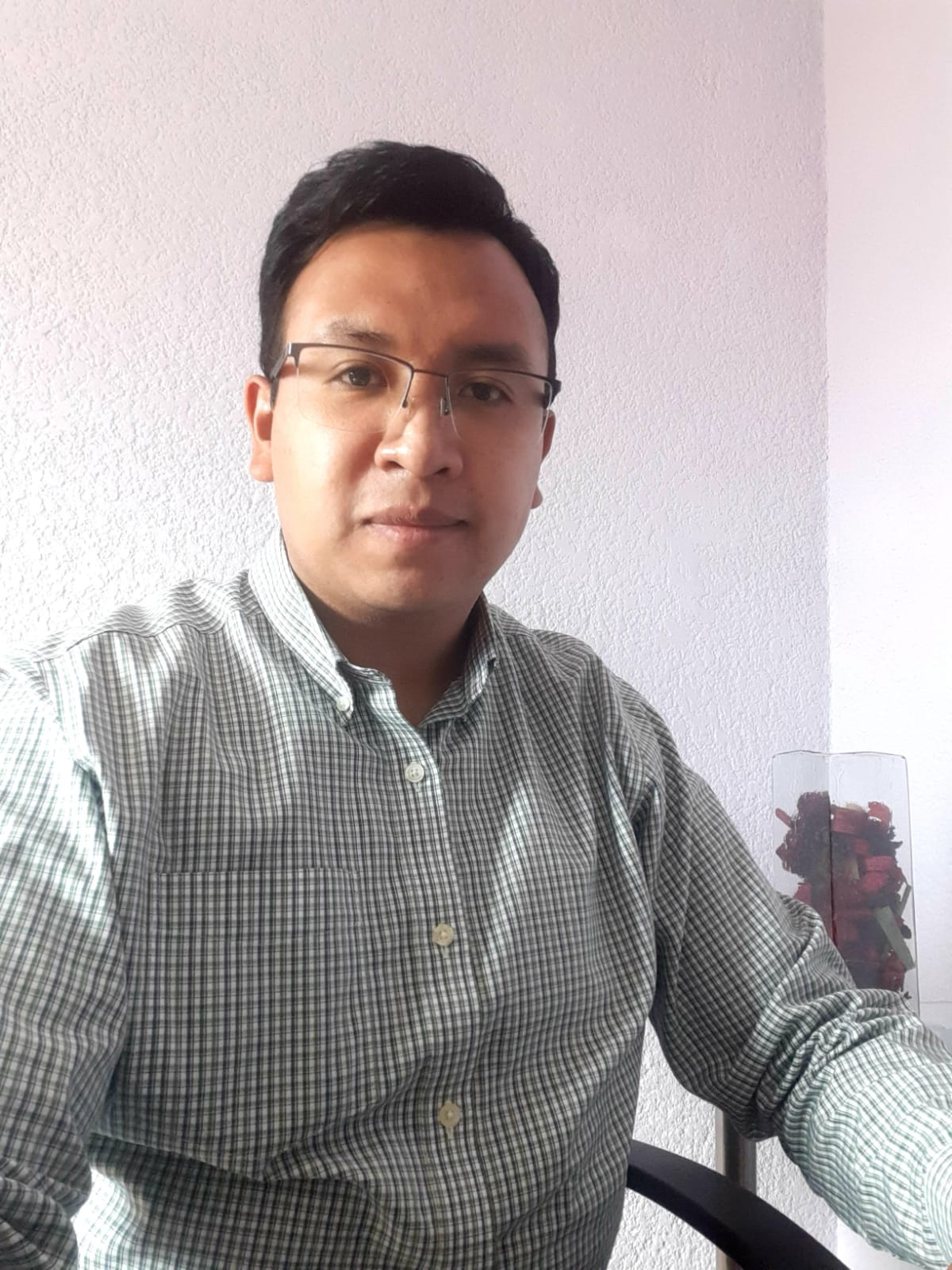
Title: Heat Treatment Evaluation for the Camshafts Production of ADI Low Alloyed with Vanadium
Invited Talk
Mr. Antonio Magaña Hernández
Arbomex, Mexico
Abstract
Ductile iron camshafts low alloyed with 0.2 and 0.3 wt % vanadium were produced by one of the largest manufacturers of the ductile iron camshafts in México “ARBOMEX S.A de C.V” by a phenolic urethane no-bake sand mold casting method. During functioning, camshafts are subject to bending and torsional stresses, and the lobe surfaces are highly loaded. Thus, high toughness and wear resistance are essential for this component. In this work, two austempering ductile iron heat treatments were evaluated to increase the mechanical properties of tensile strength, hardness, and toughness of the ductile iron camshaft low alloyed with vanadium. The austempering process was held at 265 and 305°C and austempering times of 30, 60, 90, and 120 min. The volume fraction of high-carbon austenite was determined for the heat treatment conditions by XRD measurements. The ausferritic matrix was determined in 90 min for both austempering temperatures, having a good agreement with the microstructural and hardness evolution as the austempering time increased. The mechanical properties of tensile strength, hardness, and toughness were evaluated from samples obtained from the camshaft and the standard Keel block. The highest mechanical properties were obtained for the austempering heat treatment of 265 °C for 90 min for the ADI containing 0.3 wt %V. The tensile and yield strength were 1200 and 1051 MPa, respectively, while the hardness and the energy impact values were of 47 HRC and 26 J; these values are in the range expected for an ADI grade 3.
Biography
Engineer interested in learning, analyze information, develop skills and solve problems through DMAIC methodology to achieve company and personal goals; experience in process engineering and metallic materials for the automotive industry; especially alloys for components exposed to high wear and high yield strength alloys through the use of heat treatments. I am a materials engineer with expertise in induction hardened heat treatment and austempered ductile irons. My experience in the involvement and coordination R&D (Research & Development), and NPI (New Product Introduction) projects are competitive advantages. Qualified in the use of Physical Metallurgy and Phase Transformations, optical microscopy, mechanical testing, heat treatment process development, chemical analysis and XRD analysis to determination of Retained Austenite to characterized and solve metallurgical failures. Knowledge in molten aluminum alloys for HPDC, treatment and evaluation of porosity, effect of master alloy additions and microstructural characterization and powder metallurgy by the conventional method of pressing - sintering and advanced materials such as graphene.
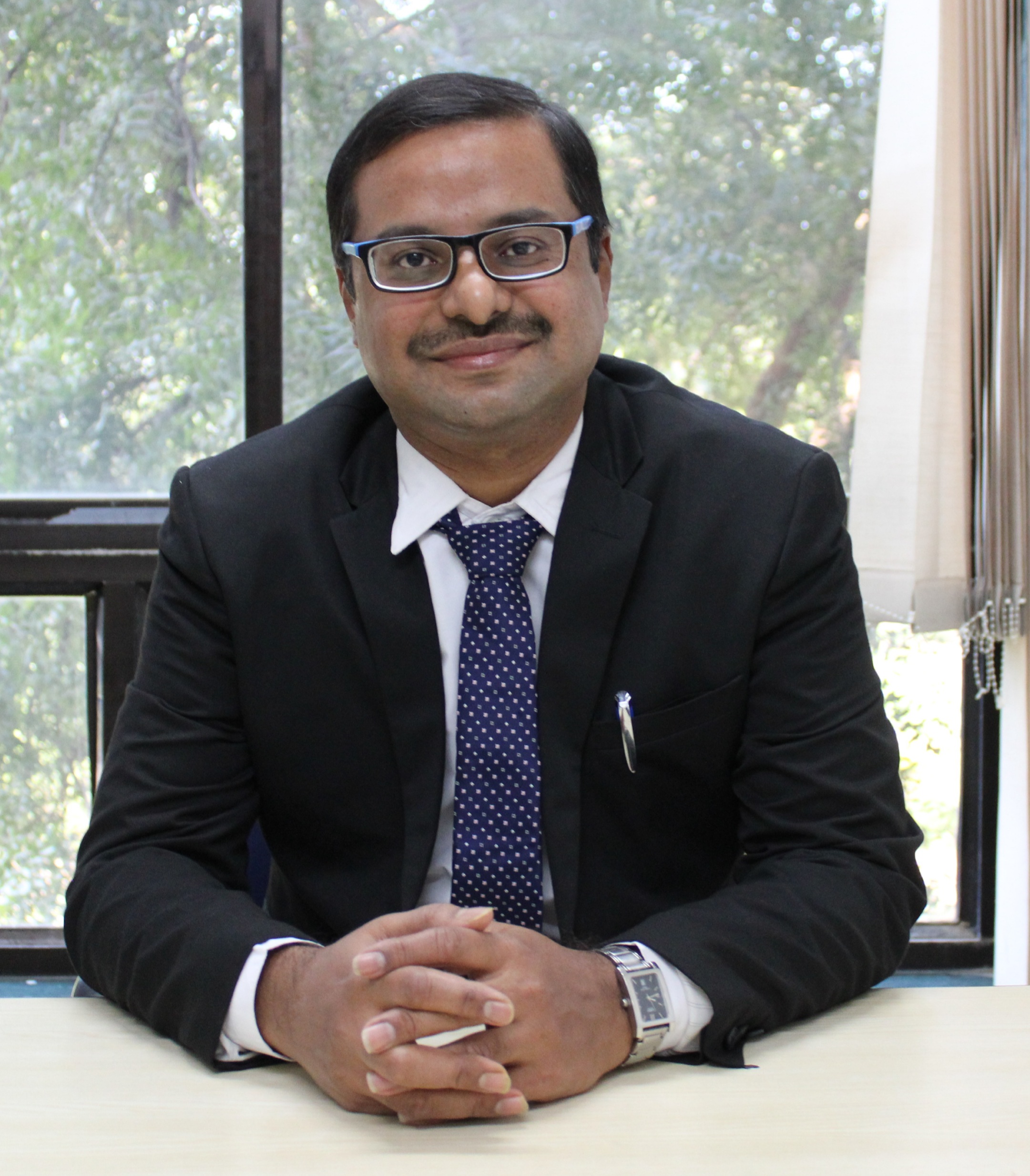
Title: Role of Humanoid Robots in Smart Environment
Invited Talk
Dr. Sailesh Iyer
Rai University, India
Abstract
Recent challenges posed by the Pandemic is bringing a smart technological revolution. With safe distancing, Citizens are now avoiding direct contact. Slowly and surely Digital World is being a reality. Hospitals, Banks, Schools, Farming and many such places where physical presence is required raises a serious threat resulting in very serious consequences. Humanoid Robots are an inherent solution which can revolutionize the concept of crowded places and avoid human contact. My talk would focus on Humanoid Robot concept, applications, cost and viability in Global Scenario. The main topics covered would range from how Human Intervention in critical situation can be substituted by Humanoid Robots. Cost of Humanoid Robots range from 2 lakhs to 15 lakhs depending upon the nature of application and requirement but now Robots are made from e-Waste making it a viable option. E-Waste Management, Smart Farming, Smart Learning Solutions, Smart Hospitals, Smart Parking, Smart Banking etc. can be performed by Humanoid Robots. Machine Learning and Deep Learning coupling with Data Storage and Visualization capabilities can lead to Smart Environment where Humanoid Robots would provide more efficient solutions. Keywords: Humanoid Robot, Disruptive Technology, Smart solutions, Machine Learning, Deep Learning, Smart Environment.
Biography
Dr. Sailesh Iyer has a Ph.D. (Computer Science) and currently serving as a Professor with Rai University, Ahmedabad. He has more than 22 years of experience in Academics, Industry and Corporate Training out of which 18 years are in core Academics. A hardcore Academician and Administrator, he has excelled in Corporate Training, Delivered Expert Talk in various AICTE sponsored STTP’s, FDP, Reputed Universities, Government organized Workshops, Orientation and Refresher Courses organized by HRDC, Gujarat University. Research Contribution include reputed Publications, Track Chair at ICDLAIR 2020 (Springer Italy), icSoftComp 2020, IEMIS 2020 (Springer), ICRITO 2020 (IEEE) and TPC Member of various reputed International and National Conferences, Reviewer of International Journals like Multimedia Tools and Applications (Springer), International Journal of Big Data Analytics in Healthcare (IGI Global),Journal of Renewable Energy and Environment etc., Expert Talk on Research based topics in various Universities and Conferences in addition to guiding Research Scholars as Supervisor. He has also been invited as a Judge for various events, Examiner for Reputed Universities, is a Computer Society of India Lifetime Member and also serving as Managing Committee (MC) Member, CSI Ahmedabad Chapter since last 2 years. Research interest areas include Computer Vision and Image Processing, Cyber Security, Data Mining and Analytics, Artificial Intelligence, Machine Learning.

Title: Nano Technology for Micro Electronics and Opto Electronics
Invited Talk
Ms S.Swetha
PSG College of Technology, India
Abstract
When you look closely, Nature is nanotechnology at its finest. From a single cell, a factory all by itself, to complex systems, such as the nervous system or the human eye, each is composed of specialized nanostructures that exist to perform a specific function. This same beauty can be mirrored when we interact with the tiny physical world that is the realm of quantum mechanics.When solids are reduced to the nanometer scale, they exhibit new and exciting behaviours which constitute the basis for a new generation of electronic devices.Nanotechnology for Microelectronics and Optoelectronics outlines in detail the fundamental solid-state physics concepts that explain the new properties of matter caused by this reduction of solids to the nanometer scale.It is also a rapidly expanding field. Scientists and engineers are having great success making materials at the nanoscale to take advantage of enhanced properties such as higher strength, lighter weight, increased electrical conductivity, and chemical reactivity compared to their larger-scale equivalents.
Biography
I am currently serving as student representative at the department of Production Engineering, PSG college of Technology. I have done some projects on Hydraulic lift at school level .I have participated in Genius world record held on Dindigul for Bharatanatyam were around 1000 people participated.
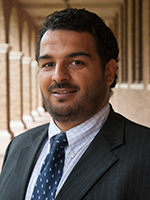
Title: ABET Assessment Plan Reform Strong Undergraduate Curriculum Plan
Invited Talk
Dr. Talal D Gamadi
Texas Tech University, United States
Abstract
This paper shows how the ABET assessment plan facilitated continuous actions of improvement and ultimately provided an example of how a strong undergraduate curriculum plan was constructed. Furthermore, it highlights the details of the department assessment plan, such as how ABET student outcomes are mapped to department undergraduate courses, what assessment tools were used, when data were gathered and evaluated, and how the analysis of data was utilized to implement actions of improvement. Finally, the paper provides two examples of significant actions of improvement, derived from the ABET department assessment and evaluation plan.
Biography
Dr. Talal D Gamadi, Texas Tech University, United States Invited Talk on ABET Assessment Plan Reform Strong Undergraduate Curriculum Plan

Title: Paper-based Artificial Leaf for Green Hydrogen Production: Technology Outlook for the Energy Transition
Invited Talk
Dr. Anupma Thakur
CSIR-Central Scientific Instruments Organisation, India
Abstract
Emerging deficit in the demand and supply of fossil fuels reframed the critical need of its alternative energy source from renewable energy, where solar to hydrogen production is one of the main research interests in today’s energy sector. Plentiful material combinations have been reported in-search of the ideal photoelectrodes, with limited success due to their poor efficiency and aqueous stability. We have successfully employed ‘nanophotonics’ developed efficient and stable photoanodes (TiO2 nanofibers, carbon quantum dots, plasmonics) and photocathodes (2D Materials) which act as ‘artificial leaf’ to harvest solar energy and convert it into chemical fuel i.e. hydrogen with maximum efficiency of 4.8% and stability of >10 hrs. Further, the trending practice of flexible electronics is a strategic-aiding aspect for the speedy-propagation of miniaturized & flexible devices. Motivated by this, we herein demonstrate polypyrrole polymer decorated laboratory filter paper (PFP) as photoanodes (PAs) which mimics the ‘natural leaf’ for artificial solar light harvesting and photoelectrochemical (PEC) water splitting. The in-situ polymerized polypyrrole polymer coated onto filter paper (i.e. for the fabrication PFP-PAs), has spherical morphology and average particle size of the order ~15 nm as portrayed by HR-TEM. The results manifest excellent photoanodic PEC activity of these PFP-PAs, yielding a photocurrent density of ~9.5 mA/cm2 (at 1.23 V vs. RHE) under 1-sun irradiation. Moreover, the robustness of these flexible PFP-PAs is also visualized by testing their stability for more than ~160 minutes in alkaline conditions, in the three-electrode benchtop device for hydrogen production. The present study also opens up the avenue for the exploration of flexible photoelectrodes for PEC water splitting employing ‘nano-photonics’ which could redefine the use of papers for ‘green hydrogen’ production in fulfilling the future energy demand as an alternative clean fuel. Keywords: Photoelectrodes, artificial leaf, hydrogen, photoelectrochemical, water splitting
Biography
Anupma Thakur is currently a DST-INSPIRE Senior Research fellow at CSIR- CSIO, Chandigarh, India, and earned Ph.D. in Engineering from CSIR-CSIO, Chandigarh. She earned gold medal in Master of Technology (M.Tech in Nanoscience and Nanotechnology), Panjab University, Chandigarh, India in 2016, and in Bachelor of Technology (B. Tech) in Electronics & Communication Engineering, Eternal University, India in 2014. She is a well-established young nanotechnologist in the field of nanomaterials & materials science engineering for designing chemosensors, and energy harvesting/conversion devices. She has published >23 international highimpact publications, 10 book chapters, >15 conference papers, 03 patents (filed) and delivered >10 oral talks. She has attained >330 citations to her published research contributions and have h-index of 11 and i10-index of 12 (Google Scholar). She is the recipient of prestigious accolades including gold medal for national academic excellence at Indo-Global Education Summit 2013, Govt. of India, BRICS Young Scientist Award 2020, India Synthesis Award-2020, Green Innovation Award-2020, etc. Apart from this she is also engaged in science communication outreach activities and is an active volunteer in the CSIR-Jigyasa program & science communicator at Euraxess India, IEEE USA & IEEE India outreach programs.
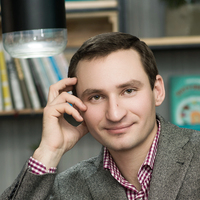
Title: Application of the PA-GMAW in wire arc additive manufacturing
Keynote Talk
Dr. Anatoliy Zavdoveev
Paton Electric Welding Institute of NAS of Ukraine, Ukraine
Abstract
Additive Manufacturing (AM) - technologies of layer-by-layer building up and synthesis of objects.Multiple additive manufacturing techniques are presented today in the world. Nowadays there are different kinds of AM realization, from the electron beam, a laser source with respective filler material to wire arc technologies. Among them wire arc additive manufacturing (WAAM) the most promising for producing large metal components for the construction industry. Firstly, it conditioned by the cost-effectiveness of the WAAM. The heating source in such a scheme is an electric arc. For filler material is used commercial welding wire. The combination of these two factors gives valuable benefit and gain before high-energy laser or electron beam tools.
Direct energy deposition attracts more and more attention in the additive manufacturing design research. Considering GMAW as the most widespread it should be taken into account the operating mode. This means special welding current, voltage, welding speed, etc. In complex all above mentioned welding parameters affecting welding thermal cycle. WCT is the most important measure of welding process effectiveness due to it determines structure formation and thus properties of the final product. In this connection determination of the optimal welding parameters is the key point for successful additive manufacturing process dosing. The modern development of the welding power source offers pulse technology implementation. Commonly known pulse parameters are the amplitude and duration of the pulse and pause put additional complexity into the design process. Nevertheless, the application of special project methods such as the Taguchi algorithm, makes this task solvable. A number of studies have demonstrated the effectiveness of pulse technology in the traditional welding process. Namely, PCGMAW improves stabilization of the arc, decrease spattering, increase penetration depth, etc. Further development of pulsing technologies in GMAW provides additional improvement of the pulse combination, thus obtained double pulse. Application so-called low frequency (f<25Hz) pulse arc welding (PAGMAW) provides opportunities for metal crystallization process controlling. Obviously, a good combination of the modern pulse technologies in GMAW will bring exciting benefits for additive manufacturing promotion into large-scale production.
Biography
Anatoliy Zavdoveev, Ph.D. has been worked in Donetsk Institute of Physics and Technology of the National Academy of Sciences of Ukraine since 2003. From October 2005 to October 2008, he studied at the graduate school of the Donetsk Physics and Technology Institute of the National Academy of Sciences of Ukraine. In 2007 A.V. Zavdoveev was awarded Academician A.A. Galkin scholarship. From November 2008 to November 2014, he worked in the department of high-pressure physics and advanced technologies of the Donetsk Physics and Technology Institute of the National Academy of Sciences of Ukraine. Since November 2014 A.V. Zavdoveev works on Researcher position of the department of alloy steels welding, Paton Electric Welding Institute of the NAS of Ukraine. A.V. Zavdoveev defended his thesis for the positions degree of candidate of technical sciences in 2014. The scientific interests of A. V. Zavdoveyev concern the structural, physical, and operational characteristics of low-carbon steel subjected to various thermal-deformation processing methods. A.V. Zavdoveev successfully works with such techniques as backscattered electron diffraction (EBSD), scanning electron microscopy, X-ray diffraction, fractography, etc. His work shows the effectiveness of rolling with shear on the structure and properties of low carbon steel. In particular, the use of rolling with shear allows creating a special structure, which is inherited during further processing by traditional methods. He has 1 monograph, more than 15 articles in international journals and over 20 abstracts of conferences, actively participates in international conferences, Institute activities, and student training.
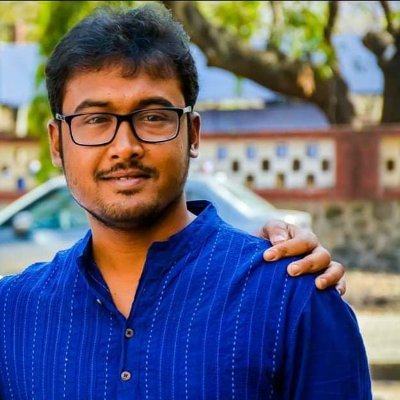
Title: NiFe Layered double hydroxide-Decorated N-Doped Entangled-Graphene Framework: A Robust Water Oxidation Electrocatalyst
Invited Talk
Mr Narugopal Manna
CSIR-National Chemical Laboratory, India
Abstract
Three Dimensional (3D) porous carbon materials are highly desirable for electrochemical applications owing to their high surface area and porosity. 3D architecture and porosity of the carbon support materials allow the reactant molecules to access more numbers of electrochemical active centres and simultaneously facilitate removal of the product formed during the electrochemical reactions. Herein, we have prepared nitrogen-doped entangled graphene framework (NEGF), decorated with the NiFe-LDH nanostructures by in-situ solvothermal method followed by freeze-drying at high pressure and low-temperature conditions. The freeze-drying method helped to prevent the restacking of the graphene sheets, and the formation of high surface area nitrogen-doped entangled graphene (NEGF) supported NiFeLDH. The incorporation of NEGF has significantly reduced the overpotential for the electrochemical oxygen evolution reaction (OER) in 1 M KOH solution. This corresponds to an overpotential reduction from 340 mV for NiFe-LDH to 290 mV for NiFe-LDH/NEGF to reach the benchmark current density of 10 mA cm−2 . The preparation of the catalyst is conceived through a low-temperature scalable process.
Biography
I am a Doctoral Fellow at the CSIR-National Chemical Laboratory. I have done M.Sc from Calcutta University. After that, I joined NCL in 2016. My main research lines include the synthesis and characterization of low-cost nanomaterials for electrochemical energy applications. Throughout my scientific career, I have participated in national and international conferences. Additionally, I have published three articles on electrocatalysts development and energy applications.
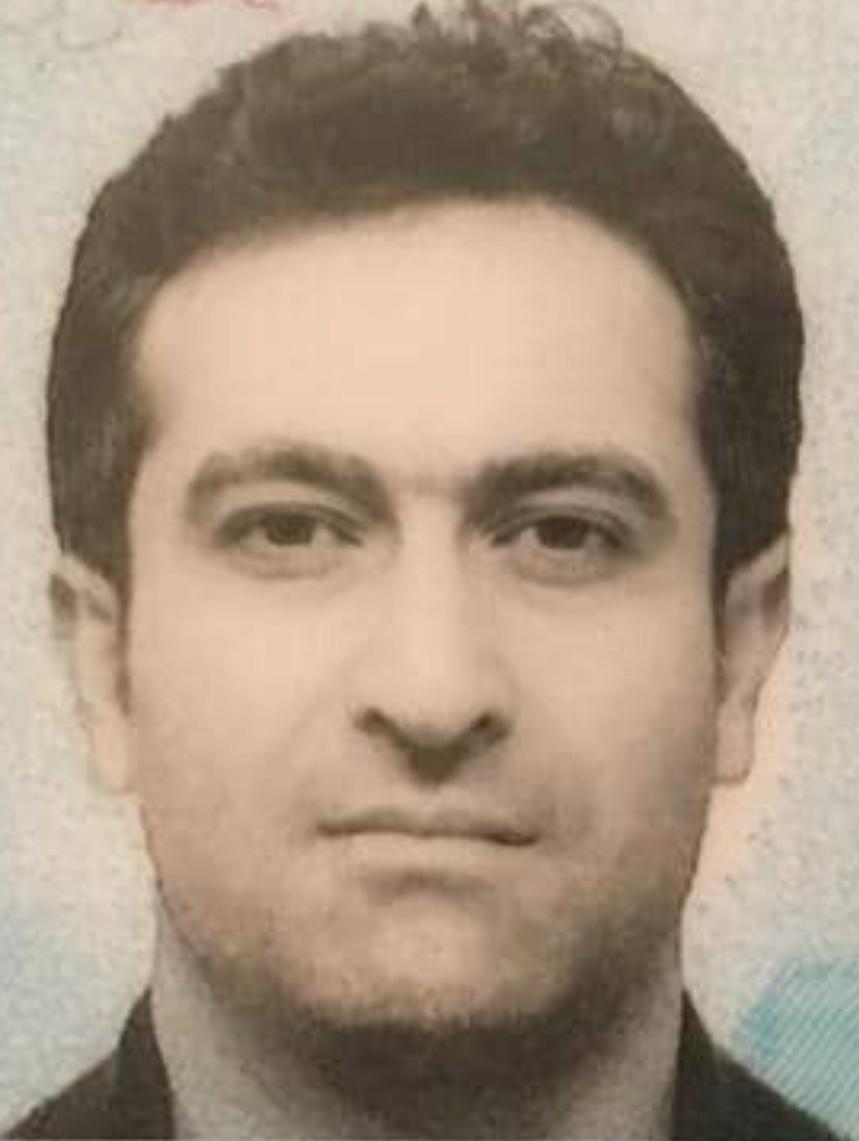
Title: Synergistic effect of lacunary polyoxotungstates and carbon nanotubes for extraction of organophosphorus pesticides
Invited Talk
Prof. Masoud Mirzaei
Ferdowsi University of Mashhad, Iran
Abstract
In this work, for the first time, a nanocomposite composed of carbon nanotubes and lacunary polyoxotungstates (LPOT/CNT) was synthesized. The nanocomposites were used as a sorbent for the dispersive micro solid-phase extraction (D-µSPE) of five organophosphorus pesticides (OPPs) (i.e. fenthion, diazinon, fenitrothion, profenofos, and phosalone) from water and fruit juice samples. The extracted OPPs were quantified via gas chromatographyflame ionization detector (GC–FID). The main factors affecting the D-µSPE of the OPPs, such as the desorption conditions, amount of sorbent, and extraction time, were investigated, in detail. The LPOT/CNT nanocomposite shows a synergistic effect and its extraction efficiency is higher than intact CNTs and LPOTs. Under the optimized conditions, the D-µSPE-GC-FID method showed linearity from 0.02 to 200 ng mL− 1 , limits of detection in the range of 0.007–0.02 ng mL− 1 . The precision expressed as relative standard deviations (RSD%) ranged from 3.3 to 4.7%. The D-µSPE-GC-FID based on LPOT/CNT sorbent was used for the extraction of OPPs in fruit juices (apple juice and peach juice) and real water samples (wastewater and river water) and with relative recovery values of 94.2–99.6%.
Biography
Masoud Mirzaei studied Inorganic chemistry at the Ferdowsi University of Mashhad, where is currently working as a full professor. His works focus on the fundamental science and applications of POMs and MOFs. He has been chairman of the Zeolite and Porous Materials Committee of Iranian Chemical Society, since 2017 and received funds and awards from Iran National Science Foundation, Iran Science Elites Federation and the Academy of Sciences of the Islamic Republic of Iran.

Title: Design and Development of Single Phase Solar Photovoltaic Supply System
Invited Talk
Mr. Pemendra Kumar Pardhi
Shri Govindram Seksaria Institute of Technology and Science, Indore-India
Abstract
This presentation provides an overview of single phase solar photovoltaic (PV) supply systems based on power converter topologies. It also covers the design and control of solar PV systems. The control such as, MPPT control and voltage source converter (VSC) control.
Biography
Pemendra Kumar Pardhi has received the B.E. degree in electrical and electronics engineering from Mansarover Institute of Science and Technology Bhopal, Bhopal, India, in 2014, the M.E. degree in electrical engineering with specialization in power electronics from the Shri Govindram Seksaria Institute of Technology and Science, Indore, India, in 2017, where he is currently working toward the Ph.D. degree with the Department of Electrical Engineering, His research interests include dc–dc converter design, control of grid tied solar photovoltaic system, and phase-locked loop.
+91 9491 456 452
Door No.200, Immidhihalli Main Road, Whitefield-560066, Bangalore, India
About Us
Global Scientific Guild organizes conferences and webinars to promote quality research and real world impact in an atmosphere of true international co-operation between scientists, doctors, professors, practitioners, engineers and industry by bringing together the world class renowned personalities to discuss the latest developments and innovations at one common platform.